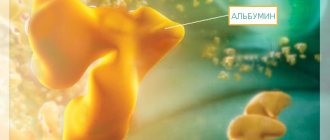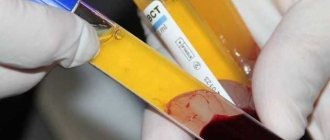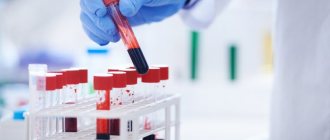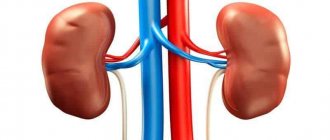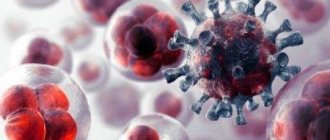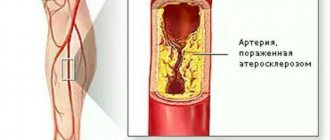There are many reasons for low blood sugar (or hypoglycemia), and this condition is accompanied by a number of unpleasant and, in severe cases, dangerous symptoms. It is expressed in a critical decrease in glucose levels and can be observed both in patients with diabetes and in absolutely healthy people or in other diseases. In some cases, a decrease in sugar levels is not dangerous, but with severe hypoglycemia, the patient may develop a dangerous condition such as hypoglycemic coma.
The topic of this publication will be useful not only to people with diabetes, but also to those who do not suffer from this particular disease. In this article, we will introduce you to the symptoms, causes and treatments of hypoglycemia. This information will be useful to you, and you will be able to avoid the discomfort and consequences that this condition can cause, or you will be able to provide first aid to a loved one suffering from diabetes.
What does it mean
The disease in which low blood sugar is diagnosed is called hypoglycemia. They talk about it if the indicator is less than the average statistical norm of 3.3 mmol/l (this is the unit of measurement that will be used later in the text).
The mechanism of development of this pathology directly depends on what factors it is provoked.
For example, to remove ethanol from the blood after a large amount of alcoholic drinks, the liver has to use up glycogen reserves. After this, she needs to replenish them, and for this purpose she takes sugar, which leads to its decrease.
Excessive exercise also increases the consumption of sugar from the blood. If they are also carried out against the background of diets or fasting, a lack of glucose will be obvious.
Tumors of various origins also “devour” sugar in large quantities.
All people experience this condition differently. For some, low blood sugar means slight dizziness and slight hypotension. For others, a change in this indicator can lead to such weakness that they cannot get out of bed. The same is with the consequences: someone can live with hypoglycemia all their lives, adapting to it, and some fall into a coma and come out of it already disabled.
Reducing blood sugar levels with foods at home
Blueberry diet is beneficial for diabetes
. It contains a lot of tannins and glucosides, so berries and a decoction of blueberry leaves are recommended to be consumed to lower blood sugar.
- Brew 1 tsp. chopped blueberry leaves
in a glass of boiling water, leave for 30 minutes, strain. Take 1/3 cup 3 times a day.
fresh cucumbers is recommended to normalize blood glucose levels
, because they contain an insulin-like substance. In addition, cucumbers help reduce appetite.
Buckwheat
– an indispensable product that lowers blood sugar. For treatment, it is useful to prepare the following composition: wash and fry the cereal without adding oil, grind in a coffee grinder. Store in a closed glass container.
- Pour 2 tbsp. buckwheat powder with kefir
or
yogurt
, leave for 12 hours. Take one hour before meals.
Jerusalem artichoke
(earthen pear) normalizes the functioning of the gastrointestinal tract, weakens, and lowers blood sugar levels. Prepare salads from fresh tubers or take 1 tsp. powder. To prepare the powder, wash the nodules, dry them, chop them finely and grind them. helps with vascular and metabolic diseases, allows you to reduce the daily dose of insulin.
Cabbage
rich in fiber, pectin, vitamins, and substances that suppress the development of pathogenic bacteria. Cabbage juice helps remove fluid from the body and helps lower blood sugar.
Rare juice
has a choleretic, anti-inflammatory, antimicrobial effect, promotes the dissolution of kidney and gallstones, and is indicated for cholecystitis. In combination with honey it is used as an expectorant.
Radish juice lowers blood sugar, helps with congestion in the gastrointestinal tract, and is an excellent remedy for constipation and increased lactation.
Potato juice
lowers blood glucose levels, helps with digestive disorders:
- Take 0.5 cups of potato juice
2 times a day half an hour before meals.
Beetroot juice is good for diabetes
. It is taken fresh 4 times a day, 1/2 tsp.
Carrot juices also reduce blood sugar levels
, zucchini or pumpkin, tomatoes.
To reduce sugar levels, since it is part of insulin, it serves as a catalyst for chemical reactions. There is a lot of zinc in oysters, wheat germ, and brewer's yeast. Eating white bread increases zinc deficiency.
Experiments on rats have shown that the abuse of white bread and sweets leads to sharp fluctuations in blood sugar levels, which causes a biological need for alcohol
. Metabolism is disrupted due to the release of a significant amount of insulin to convert dietary sugar. Caffeine and nicotine exacerbate the need for alcohol.
Thus, in order to stop drinking, you must first normalize your diet.
Causes
It is possible to prevent glycemia, but to do this you need to know why your blood sugar level is low and what factors triggered its drop.
In some cases, sugar below normal indicates the presence of some serious internal disease, which the body tries to stop on its own, sending all available glucose reserves to the problem area. In others, about the improper use of medications. This is especially true for sugar-lowering drugs and insulin for diabetes. Sometimes a change in this indicator is nothing more than a consequence of poor nutrition and an unhealthy lifestyle.
Causes in an adult
Physiology:
- dehydration;
- various diseases;
- menstruation;
- failure: heart, kidney, liver;
- exhaustion;
- tumors;
- hormonal changes.
Medicines:
- incorrect dosages (usually increased) of insulin or glucose-lowering medications for diabetes;
- intravenous infusion of saline solution.
Lifestyle:
- unbalanced diet: bias towards simple carbohydrates and fats with a lack of vitamins, minerals, fiber;
- strict diets, long fasts;
- skipping several meals;
- overeating before bed;
- excessive physical activity;
- alcoholism or drinking large amounts of alcohol.
Reasons for a child
Low blood sugar is often found in babies immediately after birth. Possible reasons:
- prematurity;
- asphyxia and other respiratory disorders;
- hypothermia;
- congenital anomalies: autoimmune insulin syndrome (Hirata disease), five-cell hypersecretion or semiectopic insulin secretion;
- maternal diabetes;
- mother taking antihyperglycemic drugs during pregnancy.
In children over 2 years of age, the causes of low sugar are the same as in adults. Among the most common are poor diet and type 1 diabetes.
Reasons for a decrease in plasma glucose in a healthy person and a patient with diabetes mellitus
If a person is healthy, then the reasons may be as follows:
- long break between meals;
- drinking large amounts of alcoholic beverages on the eve of measurements;
- irrational consumption of carbohydrates (no-carbohydrate diet, excessive love of sweets or “fast” carbohydrates);
- serious metabolic disorders;
- taking certain medications;
- excessive physical activity;
- diseases of internal organs.
If a doctor whose patient is a diabetic must understand the reasons, then they may be somewhat different:
- incorrectly selected dosage of insulin or drugs that regulate glucose levels;
- dehydration;
- prolonged hunger;
- frequent alcohol abuse;
- various types of insufficiencies - hormonal, cardiac or other;
- general exhaustion of the body caused by an irrational diet, intense physical activity, and other reasons.
3.5 mmol/l is a critical indicator. When the analysis shows a lower level, this may indicate serious problems in the body.
Clinical picture
A 100% sign of hypoglycemia is a blood test with low glucose levels. However, you can recognize the disease yourself even before visiting the hospital. The body itself sends alarm bells.
Symptoms of hypoglycemia
Common signs of low blood sugar may include the following.
External:
- hyperhidrosis;
- muscle tremors, local paralysis;
- painfully dilated pupils;
- pale skin of the body;
- involuntary grimaces.
Behavior:
- excitability, aggression, anxiety, restlessness;
- insatiable hunger;
- a sharp decrease in concentration;
- disturbances of orientation in space and time;
- involuntary movements;
- speech dysfunction;
- inappropriate behavior;
- seizures resembling epileptic ones.
Changes in the body:
- disturbances in heartbeat rhythm;
- double vision;
- hypertension;
- vomiting, nausea;
- lethargy, drowsiness;
- migraine, dizziness;
- burning, tingling, goosebumps;
- amnesia;
- respiratory disorders.
With very low sugar levels, drowsiness and lethargy can lead to a confused, unclear consciousness (a person ceases to understand where he is). The next stage is deep fainting. If the patient does not receive the necessary medical care at this stage, he will fall into a hypoglycemic coma.
Sometimes it is difficult to differentiate the signs of low sugar from other pathological conditions (hypotension, chronic fatigue syndrome, cancer). Therefore, to confirm the diagnosis, you need to do a blood test, several times to obtain a more accurate result.
Blood test indicators
The peculiarity of this pathology is that the blood sugar level is too individual an indicator and can vary depending on existing diseases and gender. For comparison, here are some numbers.
Normal blood sugar levels should not fall below 3.3 mmol/l. However, the corridor of 2.8-3.3 in most cases is rarely felt by a person and does not lead to any negative consequences. Therefore, a number of sources indicate that it is worth talking about hypoglycemia only when the indicator is < 2.8.
There are special situations when hypoglycemia is diagnosed:
- in premature newborns with blood sugar levels ≤ 1.1;
- in full term ≤ 1.7;
- for sepsis ≤ 2.2;
- after stroke ≤ 3.3;
- for diabetes mellitus ≤ 6-8;
- in the perioperative and resuscitation period ≤ 4.
Studies have shown that representatives of the stronger sex are more sensitive to low sugar levels. Therefore, the indicators are slightly adjusted depending on gender differences.
Symptoms in women
- Blood sugar concentration ≤ 1.9–2.2;
- psycho-emotional manifestations predominate: mood swings, moodiness, tearfulness, which resembles the condition of PMS;
- irresistible craving for sweets;
- Nocturnal hypoglycemia is often diagnosed.
Symptoms in men
- Blood sugar ≤ 2.5–2.8;
- Somatic manifestations predominate: excessive sweating, low blood pressure, paralysis and tremors of the limbs;
- craving alcohol with high-carb snacks;
- Nocturnal hypoglycemia is diagnosed extremely rarely.
This is interesting. Specially trained dogs, sensing the approach of a hypoglycemic attack in diabetics, give them signs about this, and they promptly take a dose of carbohydrates. And all thanks to isoprene, a substance that the patient’s body begins to release when blood sugar drops. It causes anxiety in some animals.
Classification of hypoglycemia
Depending on how much the decrease occurs, different forms of the disease are distinguished.
Light form
Sugar level = 2.8-3.3 (average values, without taking into account gender characteristics and the presence of other diseases). The person is conscious and may not even feel changes in his condition. Can stop hypoglycemia on its own.
Heavy
Sugar concentration indicators = 1.9-2.7. The patient is conscious, but is so weakened that he cannot stop the attack on his own; the help of outsiders is required.
Hypoglycemic coma
Sugar level is below 1.8. Profound fainting and coma.
There are also symptomatic and nocturnal hypoglycemia.
Symptomatic
It is most often diagnosed in diabetics when glucose levels drop sharply from high levels to normal. In this case, all the symptoms of hypoglycemia are observed, although a blood test will show values within the acceptable range. This is a dangerous condition that requires immediate attention.
Night
The reasons for low sugar levels at night are excessive exercise during the day, overeating or drinking alcohol before bed. In diabetics, triggering factors include administering the wrong dosage of insulin (type 1) or taking too much of a sugar-lowering medication (type 2) in the evening. This condition can also be caused by nightmares, which cause a surge of adrenaline.
Reducing blood sugar by using it wisely
To avoid having to treat diabetes or pancreatic disease in the future, you should eat a reasonable amount of sweets during the day. The most interesting thing is that there are no specific standards for sweet consumption.
Some doctors are convinced that up to 80 grams of sugar per day is enough for healthy young people who do not subject their bodies to significant physical activity.
This norm is covered by consuming a couple of bottles of Fanta (0.3 l). A teaspoon holds up to 7g of granulated sugar, so it’s not difficult to calculate how much sweets you receive in excess of the norm during the day with tea or coffee.
In order for the body to receive vitamins and minerals, it is worth limiting the consumption of sweets and at the same time including sweet natural products in the diet: dried apricots, raisins, persimmons, apples, pears, plums, grapes, carrots, honey.
Diagnostics
When going to the hospital with suspected hypoglycemia, the following measures are taken to clarify the diagnosis.
- Examination of the patient by a doctor, identifying external signs of the disease.
- Detecting blood sugar levels with an analyzer. Comparison of the obtained results with the norm.
- Interpretation of electrocardiography.
- Electrocardiogram (performed to exclude cardiac pathologies, which often develop against the background of hypoglycemia).
- Pulse oximetry.
If a patient has low blood sugar, the doctor may additionally prescribe a differential diagnosis. It allows you to distinguish between hypoglycemia and other pathological conditions that can cause similar symptoms. These are diabetic coma, epilepsy, encephalitis, intoxication and traumatic brain injury.
Home events
People who periodically suffer from low blood sugar should definitely have a glucometer at home. They also need to know their acceptable threshold. As soon as there are signs that glucose has decreased and the device has confirmed this, it is necessary to take measures to normalize the condition. That is, you need to be aware of what to do and how to raise your glucose level. In case of mild hypoglycemia and preservation of consciousness, this can be done without the involvement of specialists.
Algorithm of actions
1. Measure your sugar level. Make sure it is low.
2. Eat some simple carbohydrates in the amount of 2 XE (bread units). Experts recommend the following products (you can choose one):
- 4 pieces of refined sugar;
- 40 g granulated sugar;
- 40 g honey (but not candied);
- 40 g of any jam;
- 200 ml of any fruit juice;
- 200 ml sugar-sweetened carbonated drink.
If low glucose levels are caused by an overdose of insulin, it is recommended to eat an additional 1.5 XE in addition to one of these foods. In this case, experts recommend a piece of ordinary rye bread.
3. After this, you need to sit or lie down quietly for 15 minutes. During this time, the condition should normalize.
4. Take measurements with the glucometer again. If your indicators and health remain the same, repeat these instructions.
In case of chronic hypoglycemia, the presented algorithm of actions is repeated until the sugar is normalized. If this is the first time you have had an attack and your health does not improve, you should call a doctor.
If the patient has lost consciousness at home, under no circumstances should you pour liquid into his mouth (the same sweet juice), as this often ends in asphyxia. In this case, you need to measure your sugar level to make sure it is low. Call an ambulance. As first aid, before her arrival, you can inject 1 mg of glucagon intramuscularly. However, you need to keep in mind that it is ineffective if the cause of a hypoglycemic attack is alcohol intoxication. In addition, it often causes a side effect such as vomiting, which in this case can create a danger of aspiration.
Diet therapy
Proper nutrition is of particular importance when dealing with low sugar levels. If the patient follows it, the risk of attacks is reduced. What should it be like for hypoglycemia:
- high protein content;
- low carbohydrate content, and only complex ones;
- mandatory consumption of fiber;
- frequent meals (6-7 times a day);
- fractional meals;
- exclusion of alcohol;
- mandatory meal before physical activity.
The diet is as similar as possible to the nutrition system for diabetics.
How to lower blood sugar with sugar substitutes
In some cases, to reduce body weight, it is worth adding aspartame to tea or coffee for a while instead of granulated sugar.
Aspartame
(“sweetness”) was discovered in 1965; it is 200 times sweeter than sugar. The product is believed to have no side effects and contains no calories. The tablets dissolve well in warm and cold water; when boiled, they lose their sweetness.
Saccharin
Banned in some countries because it is not absorbed by the body. Requires caution in case of anemia, vascular diseases, and digestive disorders.
Xylitol
with prolonged use, it can cause dysfunction of the gastrointestinal tract and impair vision.
Sodium cyclomate
not as sweet as saccharin, but more resistant to high temperatures. Banned in the USA in 1969.
Industrial fructose
Sweeter than sugar, but it is difficult to dose. Excessive consumption results in excess triglycerides and uric acid in the blood.
Health care
Drug treatment of hypoglycemia is prescribed only to patients suffering from insulin-dependent diabetes mellitus. Typically, your doctor will prescribe tablets or gels containing dextrose (d-glucose) or glucagon. However, their dosage is strictly limited, as it can lead to hyperglycemia.
Urgent medical attention during attacks is required if a decrease in sugar levels is accompanied by loss of consciousness. In this case, the following resuscitation measures are carried out:
- the patient is placed on his side;
- the oral cavity is cleaned;
- Glucose is administered intravenously: 0.2 ml per 1 kg of weight (20-40%).
If after this the person comes to his senses, he is given carbohydrates (according to the above instructions). If not, an additional dosage of glucose is administered by drip, but on the way to the hospital. To normalize the patient’s condition in a hospital setting, more powerful drugs are prescribed:
- belladonna-containing drugs (Atropine);
- blood substitutes (hydroxyethyl starch);
- pure glucose;
- to ensure hydroponic balance (Sodium chloride, sodium bicarbonate or trisamine);
- to stimulate the nervous system (Epinephrine);
- steroid hormones (Prednisolone);
- sedatives, hypnotics, anti-anxiety, anticonvulsants (Diazepam);
- alkylamine ethers (Diphenhydramine);
- oxygen.
If a hypoglycemic coma is diagnosed, doctors carry out resuscitation measures:
- tracheal intubation;
- inhalation oxygen administration;
- suction of mucus from the nose;
- artificial ventilation.
Low sugar in a newborn is a critical condition that requires urgent treatment, even if the child looks completely healthy outwardly. The main thing that doctors focus on in this case is test results. First, the baby is given glucose to increase sugar levels. If after this the results remain unchanged, hydrocortisone or glucagon is administered in fractional portions.
Why is it dangerous?
Hypoglycemic syndrome
The body's response to low blood sugar. It manifests itself as an increase in several times the main symptoms of the disease.
Hypoglycemic coma
The main cause of this condition is very low blood sugar for a long time or its sharp drop. This is the most severe degree of hypoglycemia. It begins with a feeling of hunger, irritability, headache, tachycardia. Within a few hours, in the absence of medical care, the patient's condition worsens to a coma with areflexia, decreased muscle tone, cardiac pathologies, and a drop in pressure. Death is very rare, but hypoglycemic coma threatens with other dangerous complications: cerebral edema, cerebral disorders (dementia), myocardial infarction, stroke, retinal hemorrhage.
If you find that your blood sugar is below normal, you should not take it lightly. This condition itself does not go away, and in the absence of adequate treatment measures, one of the attacks may result in coma. Therefore, constantly monitor its level and learn to increase it in order to avoid sad consequences.
Why does sugar drop in children and pregnant women?
Hypoglycemia is less common in children than in adults.
Factors that can sharply lower sugar levels in children include:
- eating sweets immediately before bed;
- insufficient physical activity;
- dinner less than two hours before bedtime;
- eating high-calorie foods several hours before bedtime.
Note. For children, the symptoms of hypoglycemia are more dangerous than for adults, but they experience them more easily.
In pregnant women, glucose levels decrease due to hormone surges. When hormonal levels change, pregnant women require much more nutrients for nutrition, which disappear due to surges in blood pressure and sugar. A sharp drop in sugar levels threatens the tone of the uterus. This increases the risk of premature birth. Pregnant women need to monitor their sugar levels. In case of surges, use special agents that reduce glucose. Otherwise, there is a high risk of glycemic coma - the last stage of the disease.

